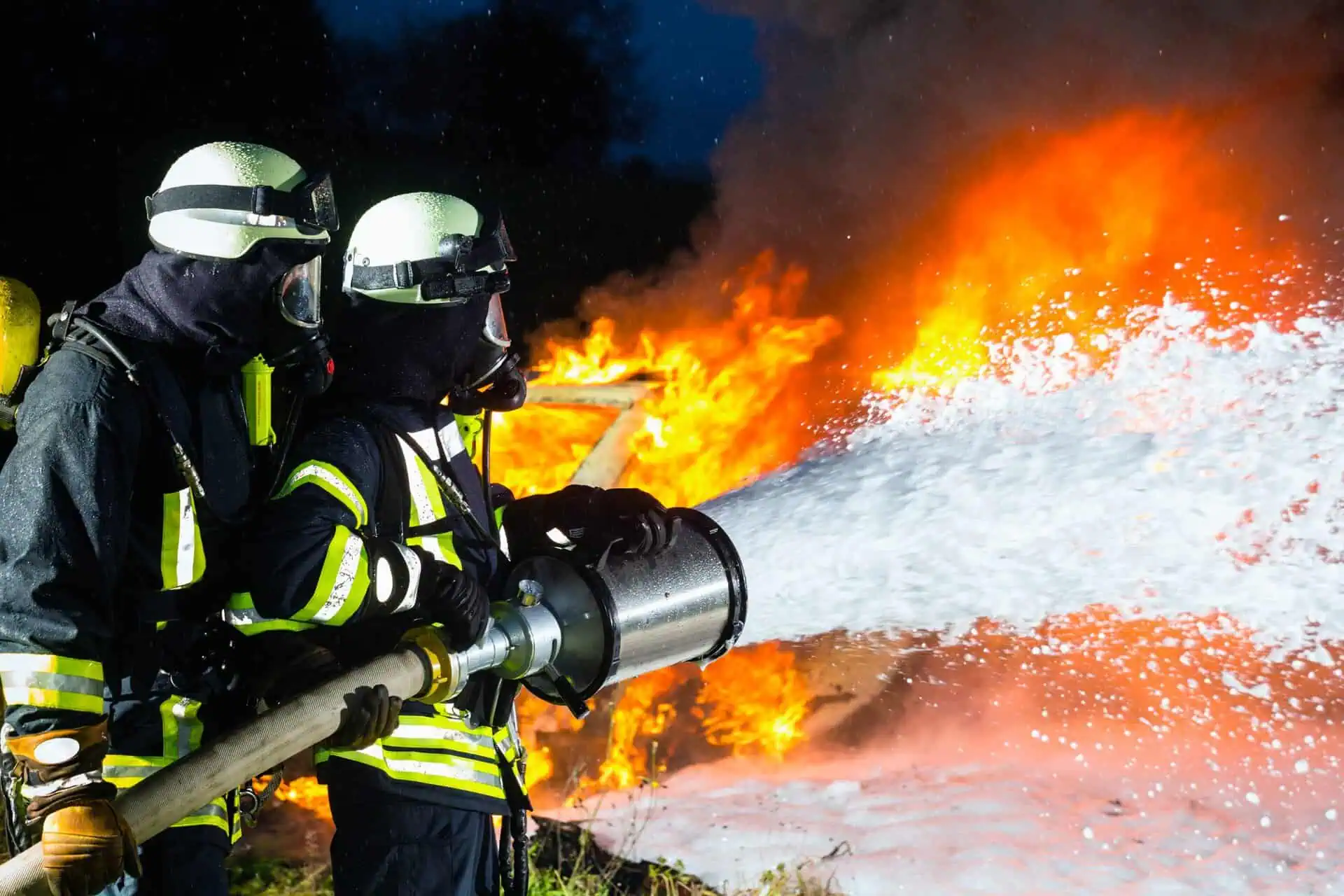AFFF Lawsuits: Impact on Service Members at Military Bases
- Last Updated: June 12th, 2025

Attorney Jessica Paluch-Hoerman, founder of TruLaw, has over 28 years of experience as a personal injury and mass tort attorney, and previously worked as an international tax attorney at Deloitte. Jessie collaborates with attorneys nationwide — enabling her to share reliable, up-to-date legal information with our readers.
Legally Reviewed
This article has been written and reviewed for legal accuracy and clarity by the team of writers and legal experts at TruLaw and is as accurate as possible. This content should not be taken as legal advice from an attorney. If you would like to learn more about our owner and experienced injury lawyer, Jessie Paluch, you can do so here.
Fact-Checked
TruLaw does everything possible to make sure the information in this article is up to date and accurate. If you need specific legal advice about your case, contact us by using the chat on the bottom of this page. This article should not be taken as advice from an attorney.
Key takeaways:
- AFFF firefighting foam used on military bases contains harmful PFAS chemicals, which are linked to health problems including cancer.
- Service members exposed to this foam may face high risks for various forms of firefighting foam cancer and other serious health issues.
- Many class action lawsuits have been filed against military bases and manufacturers by affected service members who allege harmful exposure to PFAS in AFFF.
AFFF Lawsuits and Military Bases: Impact on Service Members
On this page, we’ll discuss an overview of the military AFFF lawsuits, the impact of firefighting foam on military service members at military bases, who qualifies to file an AFFF lawsuit, and much more.
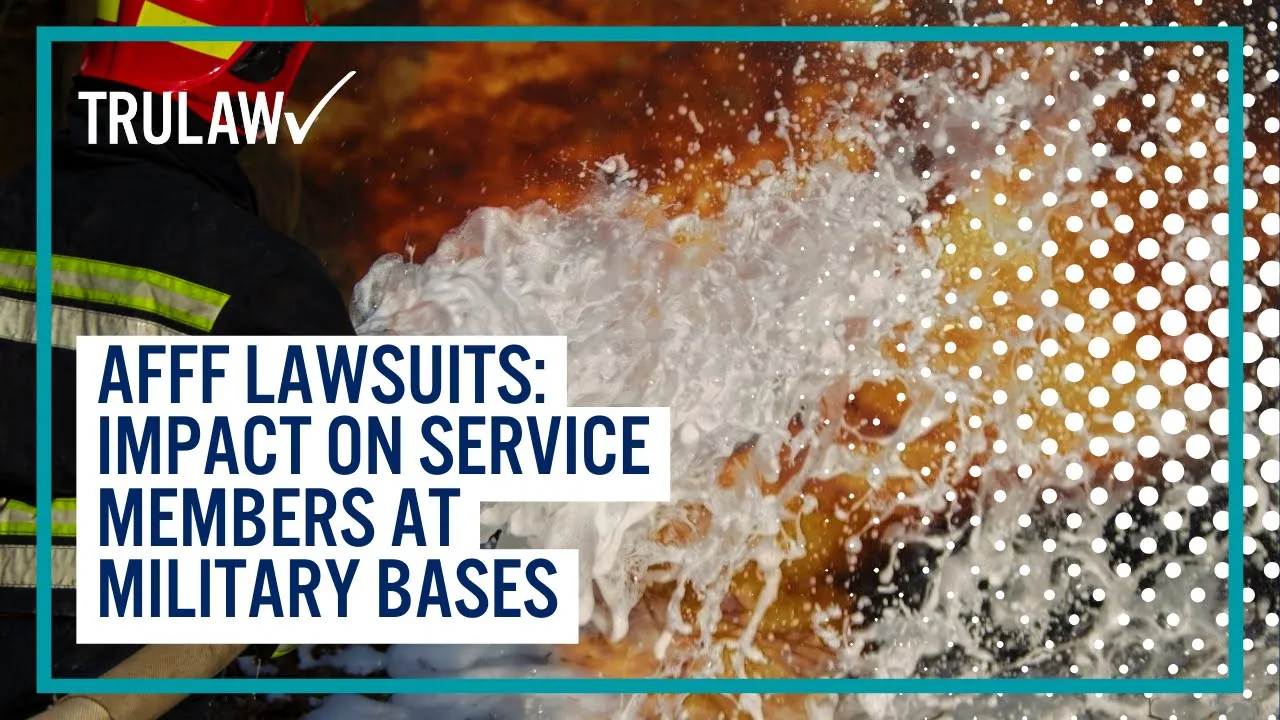
Intro to AFFF Lawsuits
An alarming issue confronting many military service members today is the health impact of exposure to AFFF firefighting foam on bases.
This foam contains harmful chemicals known as PFAS, which are linked to numerous health issues, including an increased risk of cancer.
Our article will explore into understanding this problem and discuss ongoing AFFF lawsuits against military bases, offering critical information for affected individuals.
Stay tuned; this might be the life-saving knowledge you need.
Table of Contents
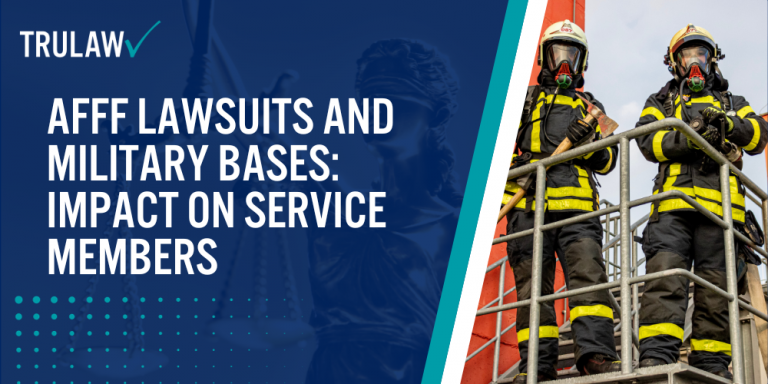
Understanding AFFF Firefighting Foam and Its Dangers
AFFF firefighting foam, frequently used on military bases, contains PFAS – a group of dangerous chemicals linked to serious health issues.
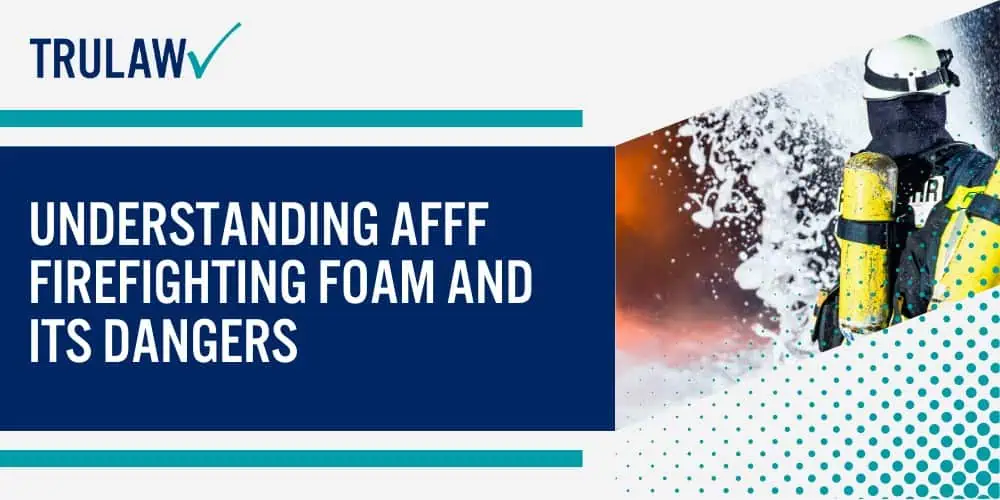
Firefighting foam used in military bases
Firefighting foam, specifically Aqueous Film Forming Foam (AFFF), is a common tool in military bases.
Its purpose: extinguishing jet fuel fires quickly and effectively.
Due to its lifesaving value, the use of PFAS chemicals in this particular foam received approval by federal agencies, including the Pentagon.
Yet despite its effectiveness for fire control, potential health risks lurk within.
The foam itself holds man-made chemicals known as PFAS – substances that research has linked to an increased risk of cancer among those exposed.
As such, service members and firefighters on military bases may face a hidden danger each time they encounter AFFF firefighting foam in their line of duty.
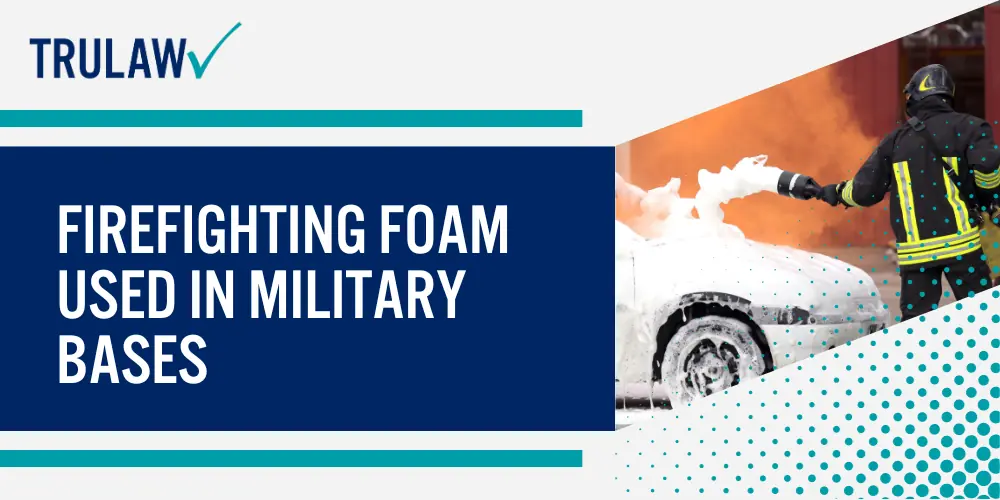
Contains harmful chemicals called PFAS
PFAS, also known as per- and polyfluoroalkyl substances, are a group of man-made chemicals that are found in AFFF firefighting foam.
These harmful compounds have been used extensively due to their ability to rapidly extinguish dangerous jet fuel fires.
PFAS are often referred to as “forever chemicals” because they do not break down in the environment or the human body, leading to prolonged exposure risks.
The main concern with these chemicals is their potential link to serious health conditions.
Studies indicate an association between exposure to PFAS and the development of testicular cancer, kidney cancer, and thyroid disease, among other health problems.
In addition to cancers, these toxins can affect growth and learning in children and interfere with natural hormones in adults.
Despite awareness of these dangers amongst chemical manufacturers and military authorities alike, the use of AFFF firefighting foams containing PFAS persists on military bases causing extensive occupational exposure for service members.
The Impact of AFFF on Service Members
Service members’ routine exposure to AFFF foam can lead to significant health risks, chiefly an increased danger of developing various forms of cancer, due to the PFAS chemicals present in the foam.
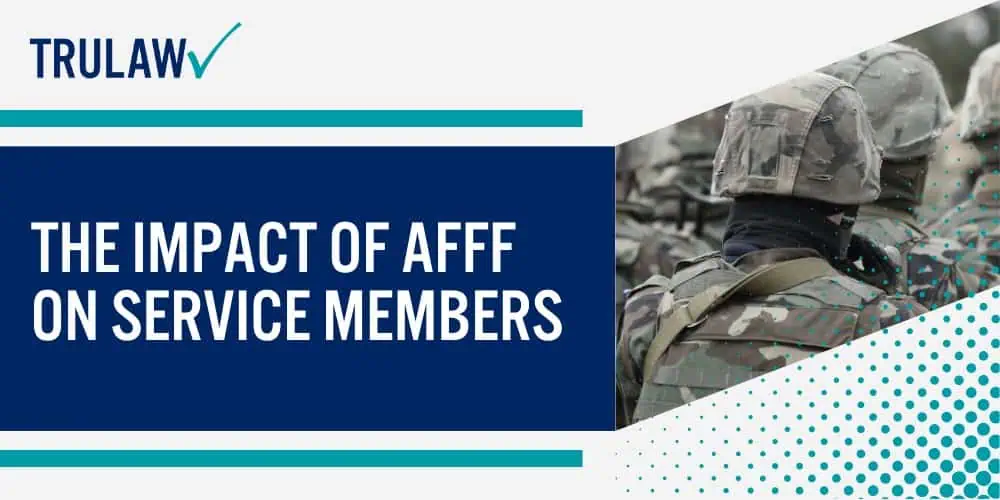
Exposure to PFAS can cause health issues
Perfluoroalkyl and polyfluoroalkyl substances, commonly known as PFAS, are harmful chemicals found in AFFF firefighting foam.
These dangerous substances can lead to serious health problems when humans come into contact with them.
PFAS chemicals have the potential to stay within the human body for a long time due to their stable nature and resistance to breakdown.
This extended bodily retention accelerates the risk of adverse effects on health.
Exposure to these toxic compounds has been linked with increased risks of various types of cancer, thyroid disorders, endocrine disruption, and reproductive issues among service members.
Contamination mainly occurs during training exercises or after real-life fire incidents where the AFFF foam is used extensively.
Long-term exposure at high concentrations can cause substantial amounts in accumulation over time making it more hazardous considering its potential contribution towards severe health complications.
If you want to learn more about AFFF lawsuit, contact us!
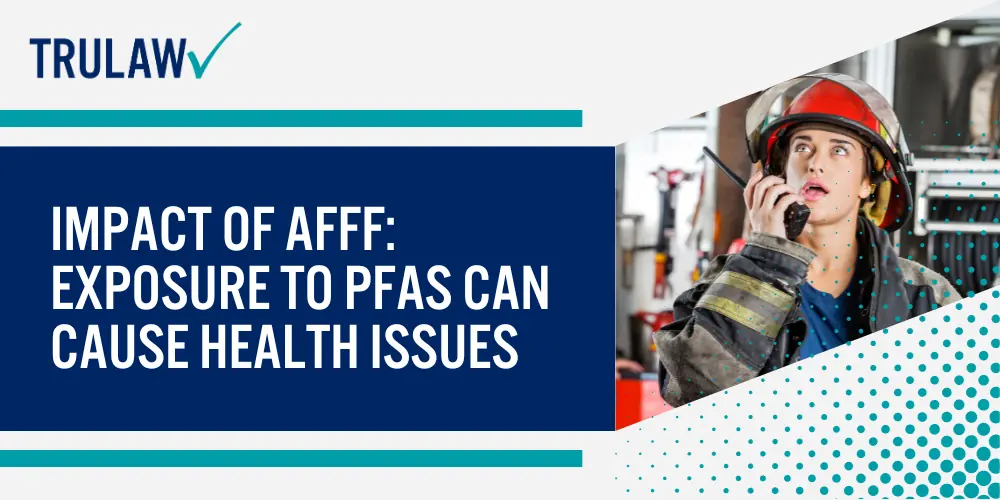
Increased risk of cancer
Military personnel who have been exposed to AFFF firefighting foam carry a higher risk of developing cancer due to the presence of toxic PFAS chemicals in the product.
Long-term AFFF exposure is linked specifically to testicular, kidney, bladder, pancreatic, prostate, and liver cancers.
The detrimental health effects that these “forever chemicals” produce are a key reason why the Pentagon halted their use in firefighting activities on military bases.
Not only do these substances increase the chance of serious medical conditions such as cancer, but they can also lead to other potentially life-threatening health complications.
AFFF Lawsuits Against Military Bases
Amid rising health concerns, numerous AFFF lawsuits have been filed against military bases by service members who allege harmful exposure to PFAS in firefighting foam; this section will provide a detailed look at these legal actions and the latest developments.
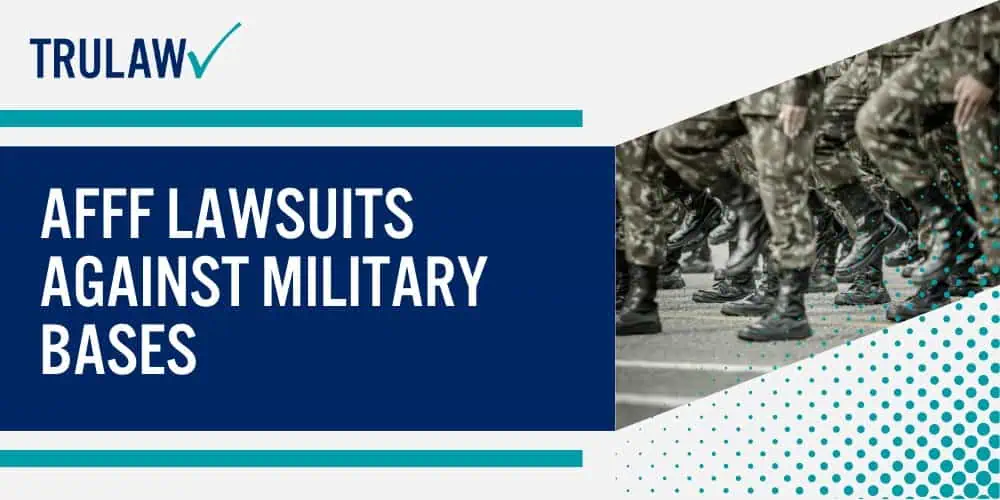
Class action lawsuits filed by affected service members
Service members affected by AFFF exposure have taken legal action.
Their claims form part of a AFFF class action lawsuit targeting military bases and manufacturers involved in the production and distribution of this controversial firefighting foam.
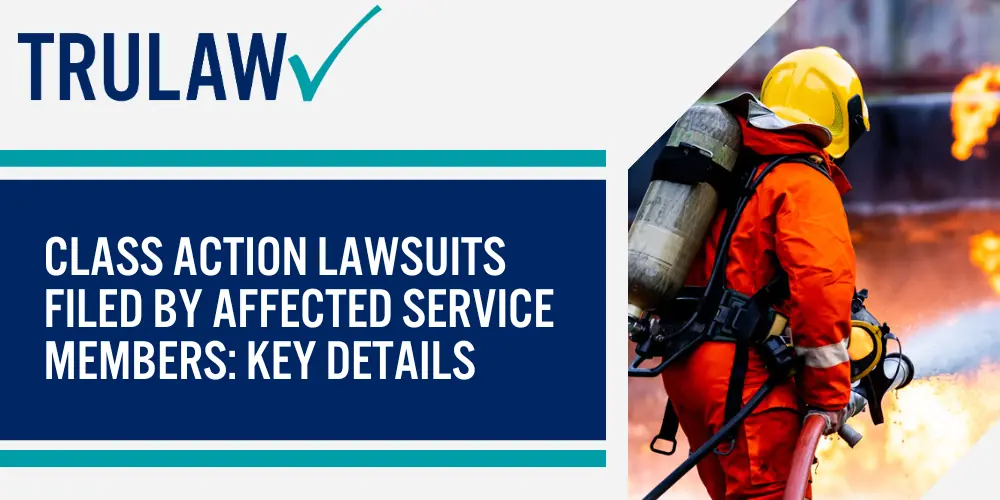
Here are key details around these lawsuits:
- The central argument in these cases is that prolonged exposure to AFFF has led to serious health complications, including different types of cancer.
- A significant number of the lawsuits are against manufacturing giant 3M, which service members claim knew about the toxic effects of the chemicals in their product but failed to warn users or take proper preventative measures.
- Many firefighters involved in these lawsuits developed cancer after years of handling this foam during their work routine or training exercises.
- Several community members who lived near military bases also form part of these legal battles following water contamination incidents blamed on AFFF.
- The Multi – District Litigation (MDL) surrounding AFFF currently hosts over 5,600 cases as more victims come forward seeking compensation for their suffering.
Latest updates on the lawsuits
In the current legal landscape, thousands of AFFF lawsuits are unfolding.
The AFFF firefighting foam MDL (multidistrict litigation) now includes an alarming number of nearly 6,000 individual cases related to injuries from exposure to toxic firefighting foam.
These lawsuits have gained momentum as recent scientific studies further confirm the link between PFAS in firefighting foam and severe health conditions like kidney and testicular cancer.
Settlement discussions for these lawsuits are already underway as potential payout amounts get evaluated, bringing hope to those affected by this crisis.
Health Risks of PFAS in AFFF
The toxic PFAS chemicals present in AFFF can inflict harmful effects on the body, manifesting in various health issues and heightened risk of diverse types of cancer.
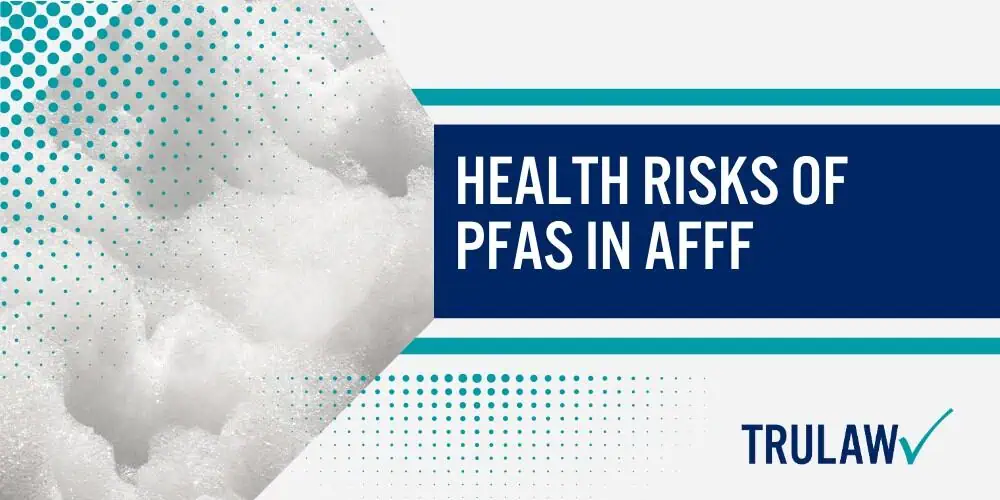
Toxic effects on the body
PFAS, the perilous chemicals in AFFF firefighting foam, wreak havoc on human health.
Upon entering the body, these toxic substances can instantly trigger unpleasant symptoms such as headaches, nausea, dizziness, and even neurological problems.
Skin reactions like rashes and allergies are also common.
More alarmingly, these harmful chemicals have long-lasting effects.
They stubbornly persist within the body’s system instead of breaking down naturally over time.
As a result of this unnatural endurance inside our bodies’ systems, they can eventually lead to severe disorders.
PFAS exposure has shown links to life-threatening conditions including cancers and organ disorders with special impacts on the immune system, liver function and thyroid balance.
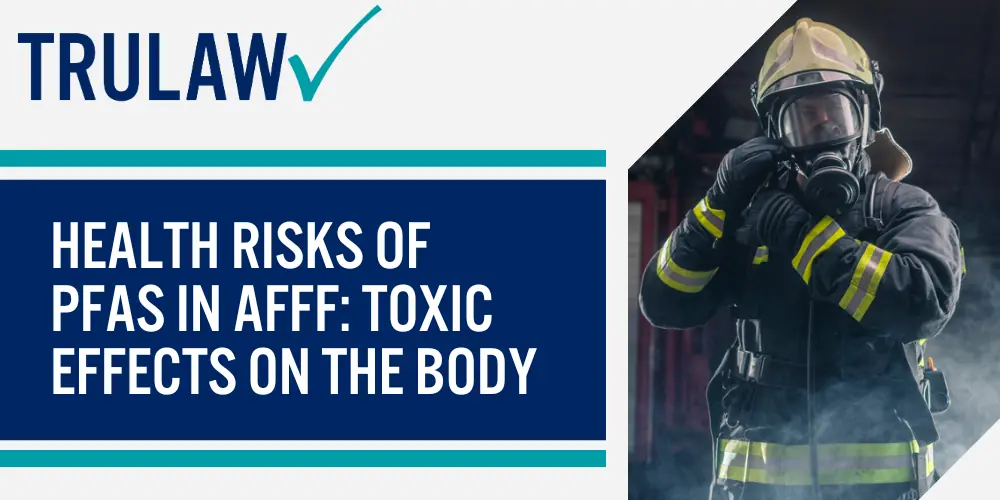
Link to various health problems and cancers
PFAS, known as ‘forever chemicals’, found in AFFF firefighting foam, pose a severe health threat to military service members.
These hazardous substances can stay in the body for an extended time, leading to a plethora of health issues.
Regular exposure escalates the risk of conditions like high cholesterol and changes in immune response.
Furthermore, studies indicate that PFAS have strong ties with specific types of cancers, such as kidney and testicular cancer.
More alarmingly, thyroid disease is another potential consequence of long-term contact with these chemicals.
This compelling evidence against PFAs has led the Pentagon to discontinue its usage due to its clear correlation with birth defects and other serious medical conditions.
How Exposure to AFFF Occurs for Service Members
Service members may have been exposed to AFFF during firefighting training or operations and through contaminated water sources on military bases.
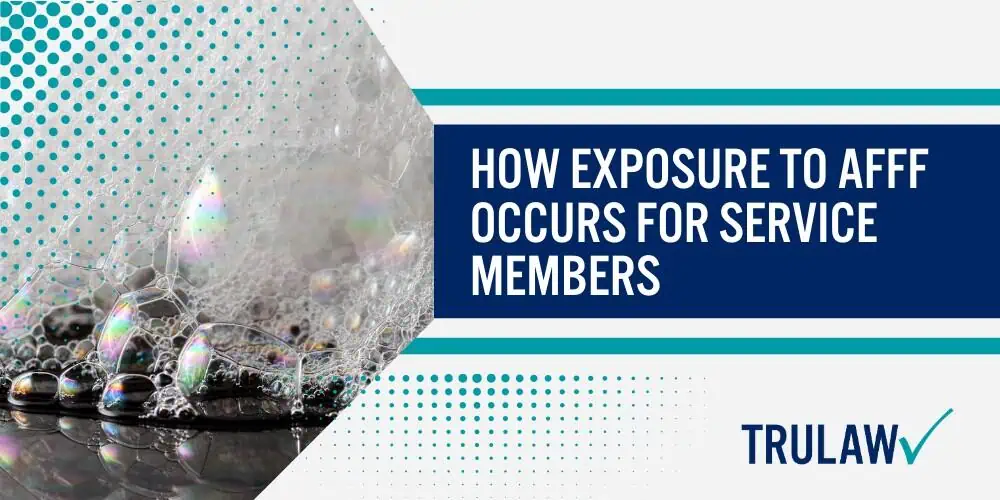
Use of firefighting foam in training exercises
Military training exercises often involve the use of Aqueous Film Forming Foam (AFFF).
They simulate real-life emergency situations, where the foam quickly extinguishes fires caused by jet fuel or other flammable liquids.
It forms a film that cuts off the oxygen supply to the fire, leading to faster smothering.
However, this efficiency comes at a cost.
The foam contains potentially harmful chemicals called Per- and Polyfluoroalkyl Substances (PFAS), known for their persistent properties and health risks.
High levels of exposure during these trainings might lead to absorption through skin contact or inhalation, increasing risk of certain types of cancer among military personnel and firefighters.
If you want to learn more about AFFF lawsuit, contact us!
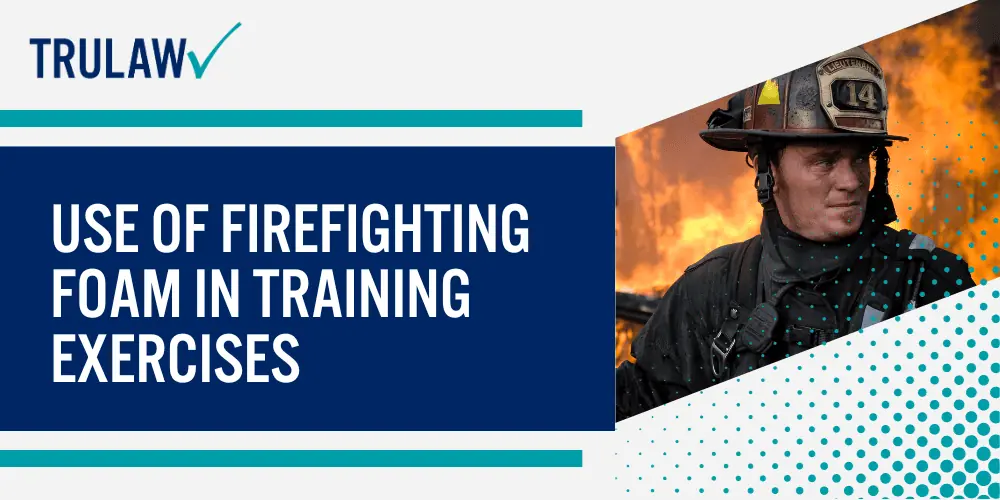
Contamination of water sources
Pollution from AFFF firefighting foam poses significant risks to our water supplies.
This foam, loaded with toxic PFAS chemicals, often seeps into the ground after use on military bases during fire drills.
Once in the soil, these harmful substances can find their way into groundwater sources and surface waters such as rivers and lakes.
Moreover, drinking water at several U.S. military installations shows alarming levels of PFAS contamination that surpasses the advisory limit set by The Environmental Protection Agency (EPA).
Regrettably, many communities living near these facilities unknowingly consume this tainted water for years.
Consequently, they are exposed to a heightened risk of health problems including various types of cancers.
Steps to Take If You Have Been Exposed to AFFF
If you suspect exposure to AFFF, it’s important first to report your situation and seek immediate medical evaluation.
Next, connect with a lawyer experienced in AFFF lawsuits to understand your rights and potential for compensation.
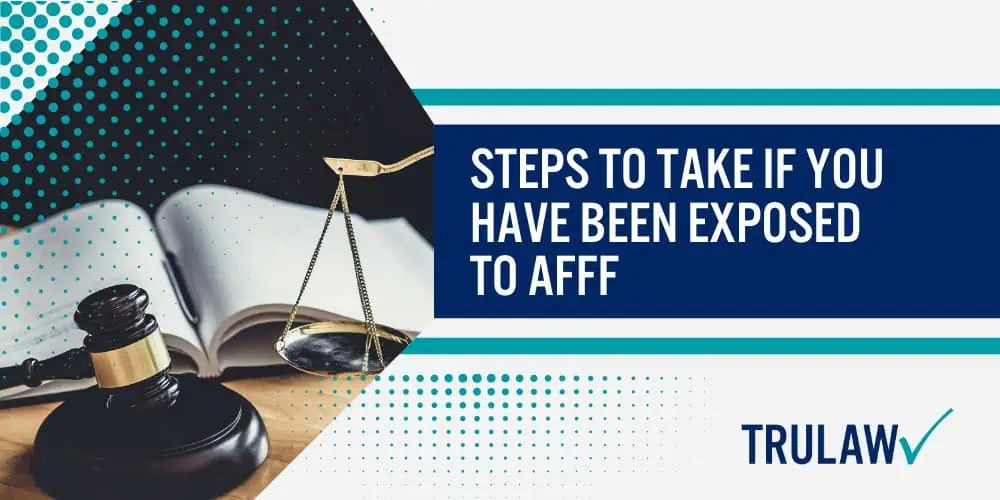
Active mitigation efforts like clean-up of contaminated areas can also prove beneficial in reducing further exposure risks.
Reporting your exposure and seeking medical attention
Upon realizing exposure to AFFF, it’s crucial to act promptly.
The first step involves documenting the incidence and circumstances surrounding your contact with the harmful substance.
Following this, seek immediate medical assistance for an evaluation of potential health risks associated with AFFF foam.
Medical professionals can conduct necessary tests and screenings to assess your condition accurately.
They can also provide appropriate treatments or preventive measures if needed.
This swift action helps protect your health while strengthening any legal claims related to the exposure incident in future AFFF cancer lawsuits or settlements.
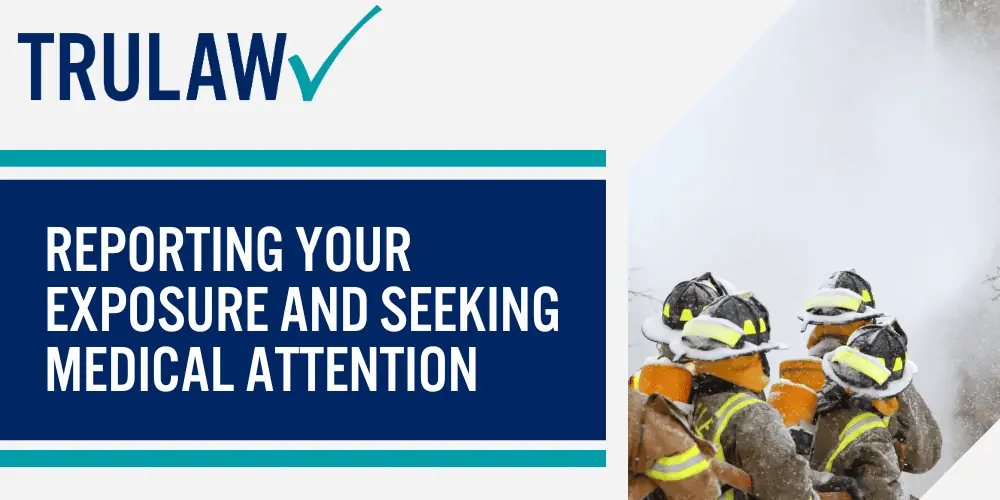
Mitigating the effects of AFFF exposure
Staying safe from the effects of AFFF exposure requires strategic measures.
Individuals working with or around firefighting foam should wear protective clothing to minimize skin contact.
Regular health checks can help detect signs of harm from PFAS chemicals early on, increasing the chances for successful treatment options.
Ongoing research into PFAS replacement technologies promises a future where service members will not have to face these risks.
Environmental clean-up actions at contaminated sites also play a crucial role in limiting further AFFF exposure and its harmful impact on communities.
Who are the Defendants in AFFF Lawsuits?
In AFFF lawsuits, the defendants often include manufacturers and distributors of the firefighting foam, such as Tyco Fire Products and Chemguard.
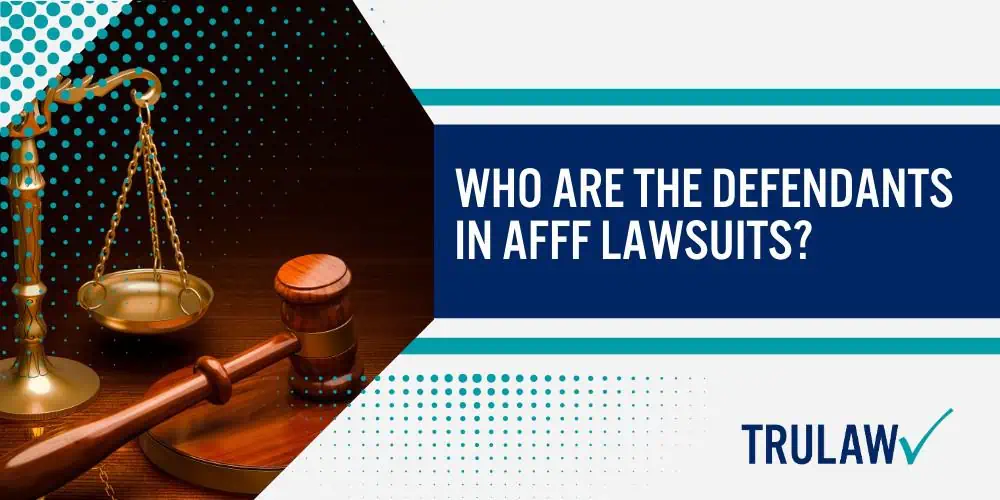
That allegedly knew about the harmful effects of PFAS chemicals but failed to warn users; governmental entities might also be implicated due to their role in regulating these substances.
Companies responsible for manufacturing and distributing AFFF
Several big industry names bear the responsibility for producing and making available AFFF firefighting foam.
DuPont and 3M hold a significant role in manufacturing and distributing this product.
These companies are currently being held legally accountable, facing multiple lawsuits over the production of AFFF.
Allegations run high against them, blaming their method of designing, producing, and disseminating AFFF containing harmful PFAS chemicals for causing health issues.
The number of defendants extends further to involve other businesses purportedly linked with inventing the dangerous compounds found in AFFF.
The ongoing legal battles strive to ensure these organizations answer for damage inflicted by their products.
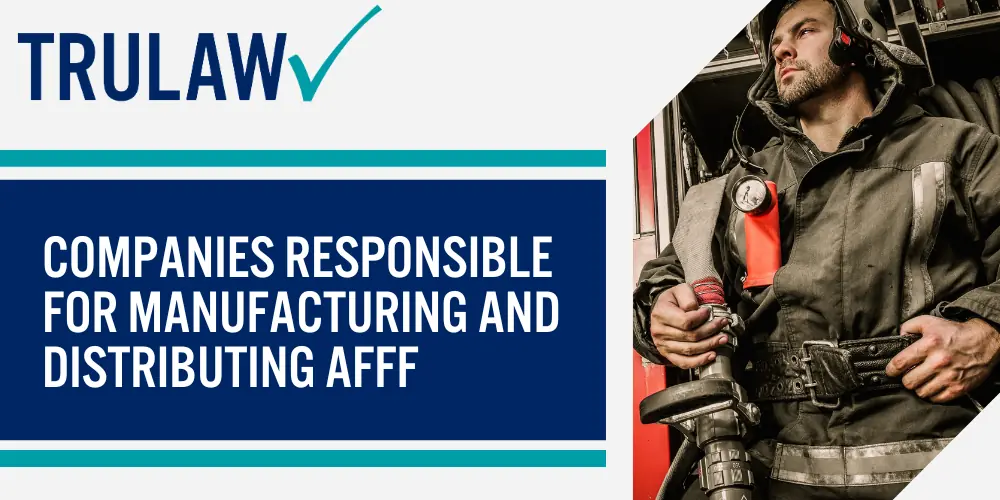
Possible government involvement in lawsuits
In AFFF foam lawsuits, the government could potentially emerge as a defendant or regulatory entity.
This involvement stems from its role in using and procuring AFFF foam on military bases.
The legal proceedings underline the need for more rigorous regulations and safety measures concerning AFFF usage and disposal.
Crucially, these cases bear significant relevance to service members due to the government’s possible participation.
Furthermore, settlement discussions may lead to resolving these lawsuits outside of court.
AFFF Lawsuit Settlement Amounts
In this section, we explore the complex world of AFFF lawsuit settlements, dissecting how amounts are determined by reviewing a tiered settlement system and discussing various factors.
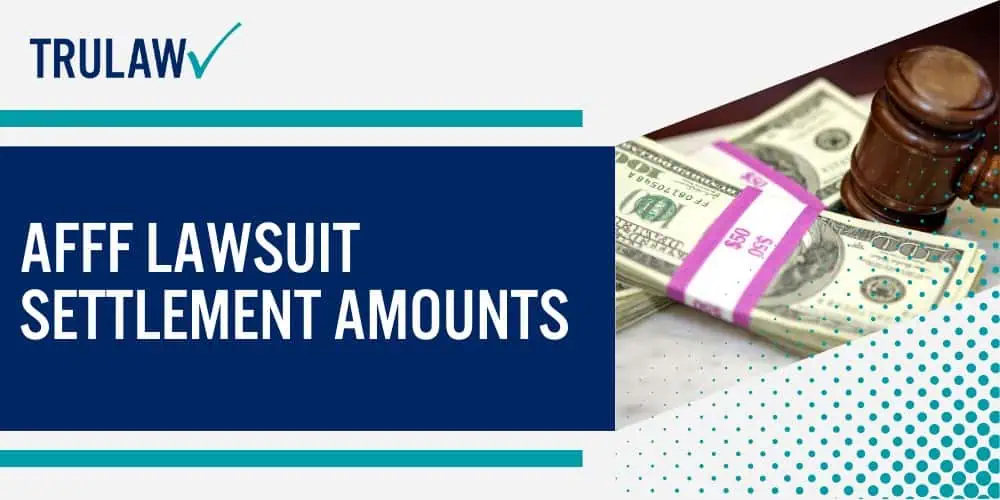
Such as longevity and intensity of exposure, severity of health issues, and potential loss of income due to illness.
Explanation of tiered settlement system
In a tiered settlement system, claim amounts are determined based on the severity of each case.
The system categorizes plaintiffs into different levels or “tiers” according to their degree of exposure and the seriousness of health effects from AFFF.
For instance, those who have experienced significant exposure and severe consequences (such as death) due to AFFF can expect higher payouts — potentially ranging between $300,000 to $600,000 (or more).
This system operates on a points basis, where specific factors contribute to calculating the overall score for each plaintiff’s case.
These factors might include diagnosis type, age at diagnosis, and scientific evidence linking PFAS to certain diseases among other variables.
Notably, Camp Lejeune water contamination claims follow a similar approach with settlements ranging from $100,000 up to $550,000 depending on the diagnosed medical condition.
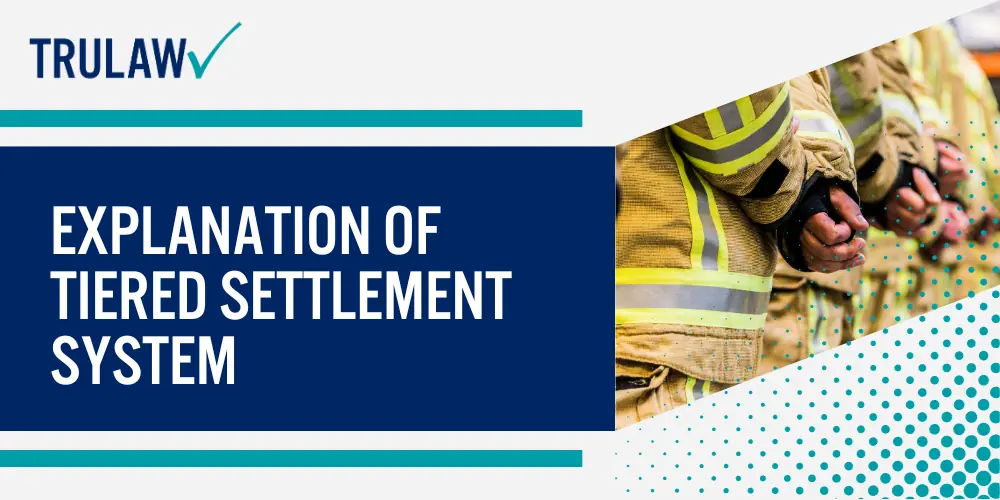
Factors considered when determining settlement amounts
Lawyers analyze several factors to resolve settlement amounts in AFFF lawsuits.
Primarily, they assess the strength of the case and how solidly they can establish negligence on part of manufacturers or suppliers of AFFF.
An essential consideration is the degree of injury or financial loss suffered by the claimant due to exposure to harmful PFAS chemicals found in firefighting foam.
The severity ranges from health complications such as cancerous conditions down to smaller, yet significant issues like medical expenses incurred for treatment.
Each case showcases unique circumstances that also play a crucial role in determining its potential value and eventual settlement amount.
How Trulaw Can Help with AFFF Lawsuits
As experts in AFFF lawsuits, Trulaw attorneys provide personalized guidance and dedicated representation, offering a free consultation for potential clients who may have been affected by harmful firefighting foam exposure.
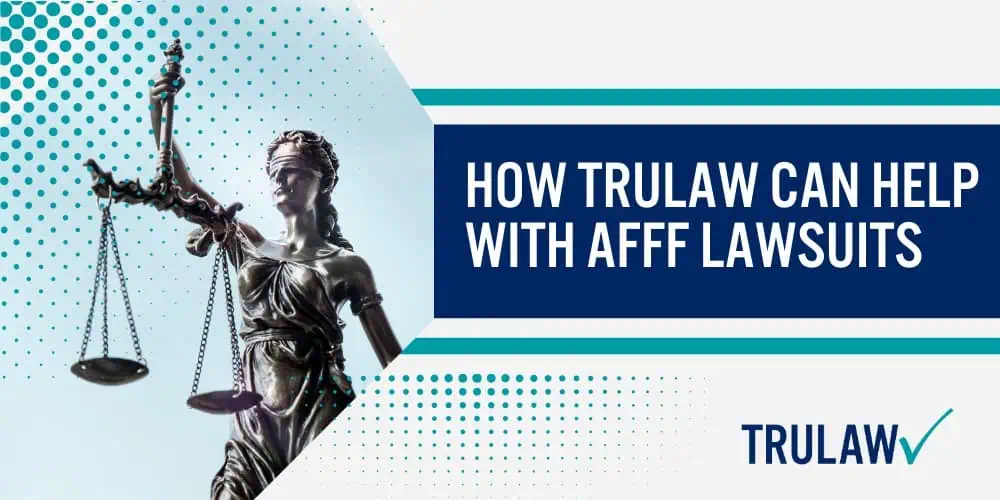
Experienced attorneys specialized in AFFF lawsuits
Dealing with AFFF lawsuits demands experienced firefighting foam attorneys who are well-versed in this particular field.
These legal experts specialize in cases related to toxic exposure from AFFF firefighting foam—especially those associated with military bases.
They bring a wealth of knowledge, acquired over years of focusing on these unique lawsuits and achieving successful outcomes for their clients.
From evaluating your eligibility for a lawsuit to navigating the complexities of the legal system, these specialized professionals play an instrumental role.
They even offer free consultations, providing potential clients an opportunity to discuss their case and learn about past client experiences before making any commitment.
By ensuring excellent representation in AFFF firefighting foam cancer lawsuits.
These skilled attorneys aim at securing the maximum compensation possible for individuals affected by exposure to harmful PFAS chemicals through AFFF firefighting foam.
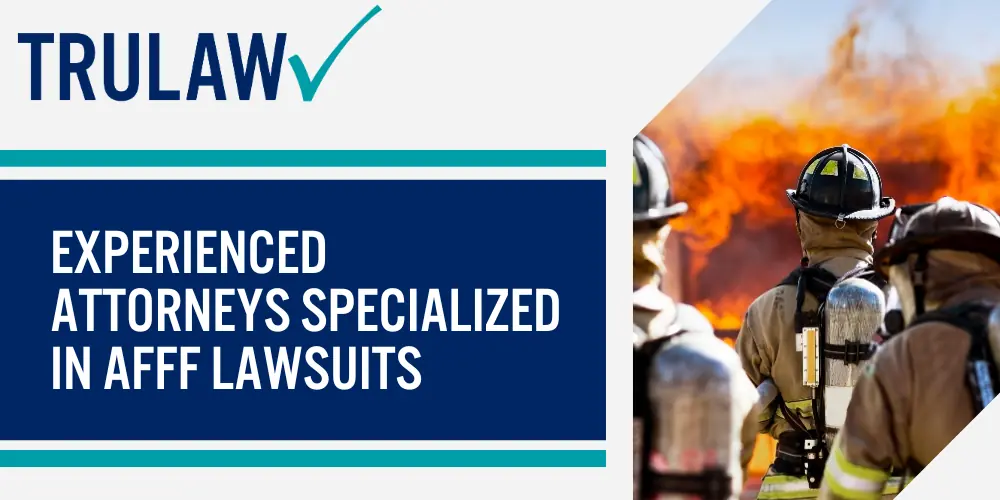
Free consultation for potential lawsuits
TruLaw provide free consultations for those considering AFFF firefighting foam lawsuits.
These legal firms have composed teams of experienced attorneys who specialize in the complexities of these specific cases.
The purpose behind this provision is to understand the individual experiences and analyze the potential validity of a lawsuit before proceeding with any legal action.
Potential claimants can discuss their scenarios, medical histories, and exposure details during these initial discussions.
In addition to face-to-face meetings, TruLaw offers a convenient chatbot on its website for instant assistance.
This interactive feature enables individuals to gather preliminary information about whether they qualify for legal action against AFFF manufacturers or other responsible parties.
Conclusion: Impact AFFF Lawsuits on Service Members
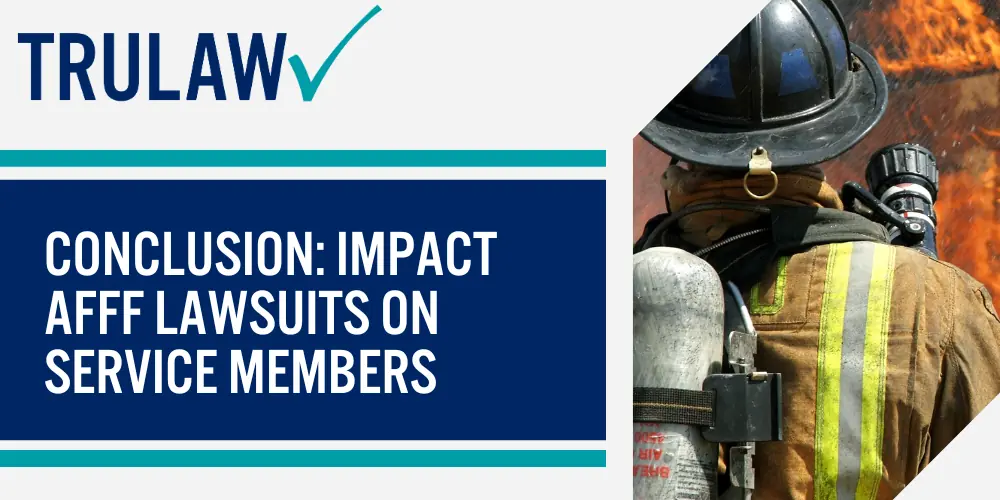
Exploring AFFF lawsuits and their implications uncovers how service members bear the brunt of these harmful substances.
As we navigate through its complexities, it’s evident these substances carry a weighty toll on our military personnel’s health.
With ongoing legal battles and settlement talks, this issue continues to unfold with each passing day.
AFFF Lawsuit Frequently Asked Questions
-
An AFFF firefighting foam lawsuit is a legal action taken by individuals who have been exposed to firefighting foam and developed diseases such as cancer due to its toxic chemicals.
-
To file an AFFF lawsuit, you should consult with experienced firefighting foam lawyers who are familiar with prior mass tort cases and the specifics of the national fire protection association regulations on AFFf products.
-
Yes, studies from environmental working groups and the National Cancer Institute indicate exposure to film forming foam (AFFF) has led to cases of prostate cancer and other related illnesses in military firefighters.
-
Yes, there are dedicated AFFF lawyers or firms specializing in personal injury that handle AFFF MDL (multi-district litigation), covering large scale afff class-action lawsuits against manufacturers of these toxic chemical-laden product.
-
Indeed! If previously engaged around places where this form was used extensively like city of Stuart V, regardless of their role – whether they acted as active users or not, they could apply for compensation under City Of Stuart Vs Firefighting Foam Manufacturer case precedent.

Managing Attorney & Owner
With over 25 years of legal experience, Jessica Paluch-Hoerman is an Illinois lawyer, a CPA, and a mother of three. She spent the first decade of her career working as an international tax attorney at Deloitte.
In 2009, Jessie co-founded her own law firm with her husband – which has scaled to over 30 employees since its conception.
In 2016, Jessie founded TruLaw, which allows her to collaborate with attorneys and legal experts across the United States on a daily basis. This hypervaluable network of experts is what enables her to share the most reliable, accurate, and up-to-date legal information with our readers!
Additional AFFF Lawsuit resources on our website:
Here, at TruLaw, we’re committed to helping victims get the justice they deserve.
Alongside our partner law firms, we have successfully collected over $3 Billion in verdicts and settlements on behalf of injured individuals.
Would you like our help?
At TruLaw, we fiercely combat corporations that endanger individuals’ well-being. If you’ve suffered injuries and believe these well-funded entities should be held accountable, we’re here for you.
With TruLaw, you gain access to successful and seasoned lawyers who maximize your chances of success. Our lawyers invest in you—they do not receive a dime until your lawsuit reaches a successful resolution!
AFFF Lawsuit claims are being filed against manufacturers of aqueous film-forming foam (AFFF), commonly used in firefighting.
Claims allege that companies such as 3M, DuPont, and Tyco Fire Products failed to adequately warn users about the potential dangers of AFFF exposure — including increased risks of various cancers and diseases.
Depo Provera Lawsuit claims are being filed by individuals who allege they developed meningioma (a type of brain tumor) after receiving Depo-Provera birth control injections.
A 2024 study found that women using Depo-Provera for at least 1 year are five times more likely to develop meningioma brain tumors compared to those not using the drug.
Suboxone Tooth Decay Lawsuit claims are being filed against Indivior, the manufacturer of Suboxone, a medication used to treat opioid addiction.
Claims allege that Indivior failed to adequately warn users about the potential dangers of severe tooth decay and dental injuries associated with Suboxone’s sublingual film version.
Social Media Harm Lawsuits are being filed against social media companies for allegedly causing mental health issues in children and teens.
Claims allege that companies like Meta, Google, ByteDance, and Snap designed addictive platforms that led to anxiety, depression, and other mental health issues without adequately warning users or parents.
Transvaginal Mesh Lawsuits are being filed against manufacturers of transvaginal mesh products used to treat pelvic organ prolapse (POP) and stress urinary incontinence (SUI).
Claims allege that companies like Ethicon, C.R. Bard, and Boston Scientific failed to adequately warn about potential dangers — including erosion, pain, and infection.
Bair Hugger Warming Blanket Lawsuits involve claims against 3M — alleging their surgical warming blankets caused severe infections and complications (particularly in hip and knee replacement surgeries).
Plaintiffs claim 3M failed to warn about potential risks — despite knowing about increased risk of deep joint infections since 2011.
Baby Formula NEC Lawsuit claims are being filed against manufacturers of cow’s milk-based baby formula products.
Claims allege that companies like Abbott Laboratories (Similac) and Mead Johnson & Company (Enfamil) failed to warn about the increased risk of necrotizing enterocolitis (NEC) in premature infants.
Here, at TruLaw, we’re committed to helping victims get the justice they deserve.
Alongside our partner law firms, we have successfully collected over $3 Billion in verdicts and settlements on behalf of injured individuals.
Would you like our help?
